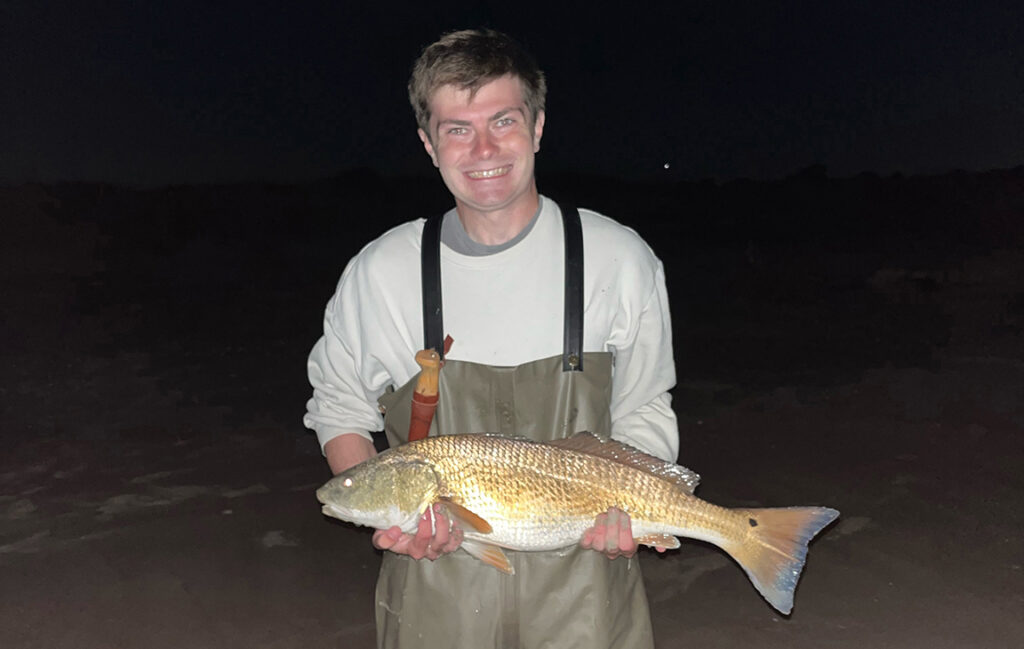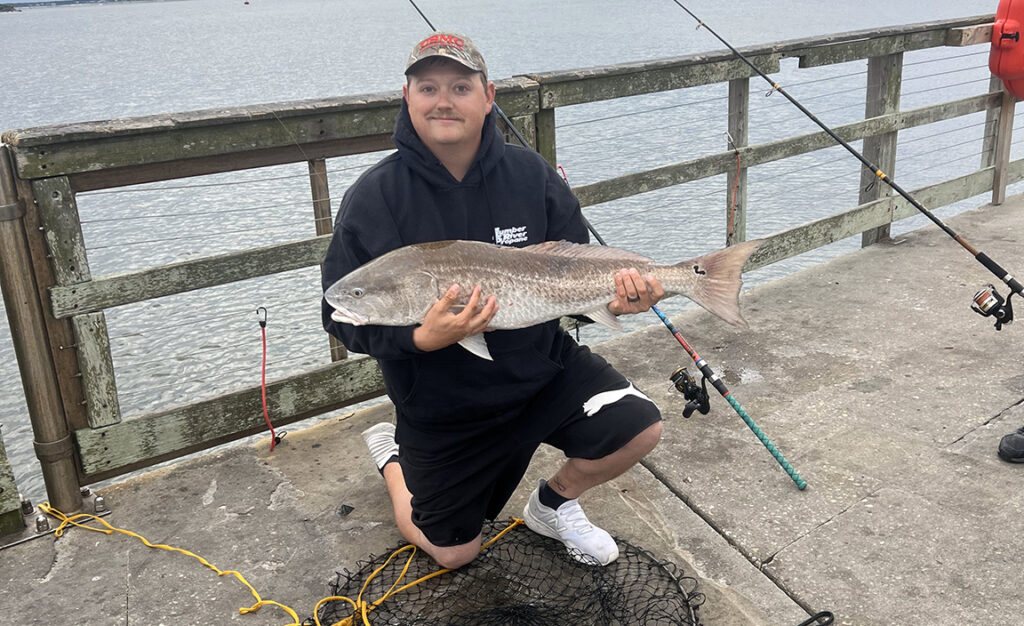Southport/Oak Island – March 2025
Angie, of Dutchman Creek Bait and Tackle, reports that anglers targeting inshore structures, especially closer to the inlet, are catching black drum and sheepshead.
Some speckled trout and red drum are mixed in when working areas in the backwaters.
There is always a chance the area sees its first bluefish show up by the end of March, though most of the time it’s April before the blues can be targeted with consistent success.
Robert, of Oak Island Sporting Goods, reports that anglers taking advantage of the small weather windows to go wet a line have been able to catch a bunch of croakers, pufferfish, and occasionally some black drum from both the surf and local piers.
Those in the backwaters are having some success catching and releasing speckled trout.
A bunch of red drum and black drum are hanging around the inshore structures.
It’s a little early, but the area is starting to see an occasional sea mullet show up in some of the deeper holes.
Looking into March, early season fishing really depends on what the water temperatures do. If conditions warm up quickly, a lot of the backwater species (speckled trout, black drum, and red drum) start moving out of the creeks and marshes and into the bigger waterways.
The sea mullet are usually the first species that really show up in numbers, with most action focused around the inlets and in deeper holes near river mouths.
Nearshore still tends to be pretty slow in March, but anglers looking to bottom fish in the ocean can usually find some black sea bass.
Running offshore, anglers can usually find some wahoo success throughout the cooler months.

Christopher Lockaby, of Oak Island, caught this 28″ red drum from the Caswell Beach surf using a large piece of cut mullet.
Hunter, of Dockside Fishing Charters, reports that moving into March, anglers are looking forward to the red drum action turning on in the area. With water temperatures pushing up, live shrimp should start to become more readily available and will be the top bait choice when rigged under a slip cork and drifted around structure.
The same shrimp and slip cork setup will also be successful in getting bites from some of the sheepshead that will be moving in. Another simple but productive rig for targeting the pilings holding the sheepshead is a fiddler crab on a jig head.
Speckled trout start to become more active and make a good species to target in the spring (even though keeper season is closed). The spring is usually when we catch the biggest trout of the year, with live shrimp being the top producing bait option.
Steve, of Reel Em Up Charters, reports that red drum is the main priority for anglers out on the water. The redfish are still in their winter patterns, schooled up as far back as you can get into the creeks. Anglers have been finding fish super shallow (1-4’). In regards to bait, live shrimp is ideal when you can get it, but if not, smaller artificials such as 3” paddle tails will get the job done.
Speckled trout will also be in the backs of these creeks and mostly holding in the deeper holes with a little bit of current.
The occasional black drum is being caught around docks and hard structures, with cut shrimp as the top bait.
Wally, of Oak Island Fishing Charters, reports that the water temperatures are still really cold, but the cold water at least has the red drum schooled up in good numbers. There’s a lack of live bait due to the low temps, but dead shrimp is getting the job done.
The area should start seeing whiting show up sometime around mid-March. They will be in deeper areas just off the beach and around the inlets.
Anglers who get the opportunity to head offshore can find plenty of jumbo black sea bass.
Gulf Stream trips will produce blackfin tuna with a few wahoo mixed in.
Zane, of Falling Tide Fishing Adventures, reports that red drum and black drum are schooled up in good numbers inshore.
When getting the right conditions, anglers can also find some big schools of red drum out in the surf zone.
Ryan, of Fugitive Charters, reports that any day now the area will start seeing whiting stacking up around deeper areas near the inlet. Usually, the whiting coincide with live shrimp moving out of the mud, and this typically happens when water temperatures hold over 60-degrees.
Anglers getting a chance to run off the beach for some bottom fishing action have been finding some jumbo black sea bass. Plenty of keepers can be found in areas as shallow as 50-60’.
Once water temperatures hit that low to mid 60-degree range, the Atlantic bonito show up in the area, and at 65 degrees, that action is usually “on.”
Right around this same time, the area starts seeing schools of bluefish arriving inshore of the bonito.
Greg, of Ocean Crest Pier, reports that anglers taking an opportunity to get out have mostly found a bunch of croakers to tug a line while bottom fishing.
March is usually when the pier sees some pufferfish and better numbers of sea mullet start to show up.
Donna, of Oak Island Pier, reports that croakers continue to make up the majority of the fishing action.
A few scattered black drum are also in the mix.






